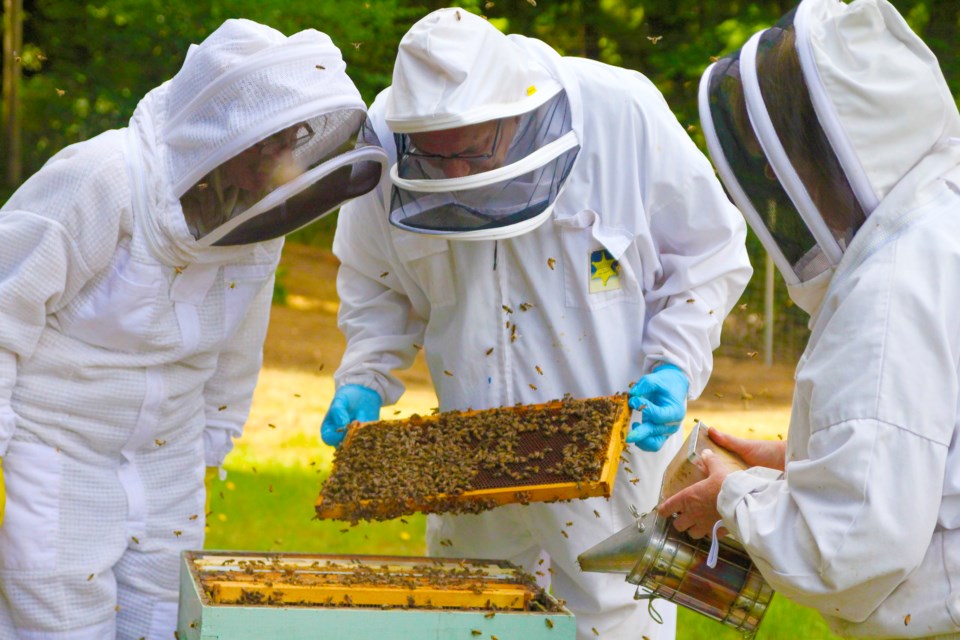Over the past three years, Bowen beekeepers Ian Kennard and Nancy Leonard have seen their hives get stronger and stronger. Prior to 2013, says Kennard, between 40 and 50 percent of their bees died over the winter. In 2013, 90 percent of their bees survived, and in this past winter, 100 percent of their bees survived. It turns out, though, that a majority of their bees do not in fact carry the traits that make them resistant to disease – “hygienic traits,” technically speaking. This news comes with new technology that Kennard, Leonard and other Bowen Island bee keepers will assist to test over the coming three years.
As UBC professor Leonard Foster explains, bee breeding technology has been stuck in the dark ages as compared to methods used in other agricultural sectors. Until Foster and his team embarked on this recent project to improve it, bee breeders had no way of knowing which bees had the genetic traits that would help them resist disease and survive the winter.
“Most bee keepers in Canada get their bees from either Hawaii or New Zealand. They’re not used to the cold and most don’t survive long enough to adapt, so the bee keepers get new ones every few years,” says Foster, adding that a minority of bee keepers, like Kennard and Leonard, breed the survivors and in doing so create bees that are adapted to this climate.
“It is pretty well recognized that the solution that offers the most hope for the industry in terms of bee death is selecting for bees that are stronger and more economically viable, which is not a shocking conclusion,” says Foster. “But the tools that people have to do the selection have not been there. We’ve tried to bring modern molecular techniques that would be used in a hospital, for example, and apply those tools to honey bees. Last year’s project, found a way to quickly and easily determine whether a bee would be hygienic or not based on the presence of a group of proteins in the bee’s genetic material.”
Since receiving a grant for further research from the Ministry of Agriculture last year, Leonard and his team have been working with eight different breeding operations in the lower mainland, including Leonard and Kennard. When tested for the proteins that Foster has determined make bees “hygienic,” only one hive of Leonard and Kennard’s queen bees qualified to be bred.
Because of the way bees breed (the drones, or male bees will fly up to several kilometers from their hive, and the queen bees, when they are ready will fly off in search of them and mate with up to 20 drones) Foster’s team needed to find a way to control which bees were mating. The solution: take the selected bees away from the mainland, and to Bowen Island to do their mating.
Last week, Heather Higo, a research technicial from Foster’s lab, brought over a select “drone brood” (male bees) from colonies tested in the Fraser Valley to Bowen. She says these bees are able to detect bees quickly within their hive, and remove the affected larvae before disease spreads.
In roughly two weeks time, when they have reached maturity, these drones will emerge from their hives. During the two weeks they are maturing, Higo will be bringing selected queens to Bowen, and putting them into a colony near the drones at Nancy Leonard’s bee yard. When the queens are ready in about three weeks, they’ll head off and mate with the selected drones.
Foster says the goal of this project, for this year at least, is to breed six or eight strong queen bees for each of the breeders involved in the experiment. Next year and the year after, they will repeat the process, and hopefully prove that it is possible to continue selecting for behaviour that will make the honeybees resistant to disease.
For Ian Kennard, there is one simple hope that this project might deliver: stronger, better bees.



